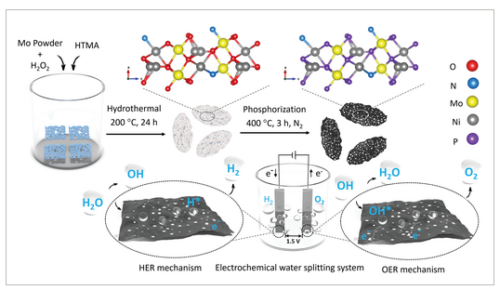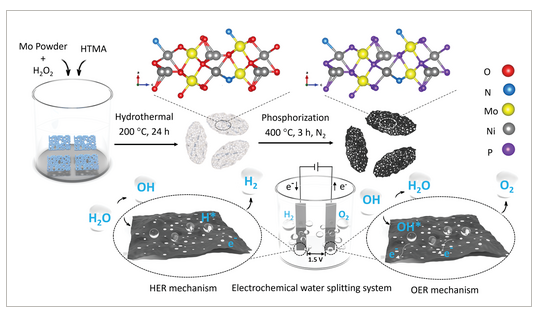研究者らは、海水から直接水素を製造する、より安価でエネルギー効率に優れた方法を開発し、真に実現可能なグリーン水素産業への重要な一歩を踏み出した。 Researchers have developed a cheaper and more energy-efficient way to make hydrogen directly from seawater, in a critical step towards a truly viable green hydrogen industry.
2023-02-13 ロイヤルメルボルン工科大学(RMIT)
◆研究者らは、海水から直接水素を製造する、より安価でエネルギー効率に優れた方法を開発し、真に実現可能なグリーン水素産業への重要な一歩を踏み出した。
◆この新しい方法は、Wiley誌Smallに掲載されたラボスケール研究において詳述されており、特許の仮出願がなされています。
◆これまで、グリーン水素を製造するには、電気分解機を使って水に電流を流し、水素と酸素に分解する。現在、この電解槽は高価な触媒を使用し、大量のエネルギーと水を消費する。1キログラムの水素を作るのに、約9リットルも必要となる。また、二酸化炭素ではなく、塩素を発生させるという毒性もある。
◆RMITの学際的なMaterials for Clean Energy and Environment (MC2E) 研究グループのチームによって考案された新しいアプローチは、特に海水で機能するように開発された特殊なタイプの触媒を使用しています。
◆RMITの研究者は、産業界のパートナーと協力して、この技術の開発を進めています。
◆研究の次の段階は、一連の触媒を組み合わせて大量の水素を製造する電気分解機のプロトタイプを開発することである。
<関連情報>
- https://www.rmit.edu.au/news/all-news/2023/feb/hydrogen-seawater
- https://onlinelibrary.wiley.com/doi/10.1002/smll.202207310
窒素ドープ多孔質ニッケルモリブデンリン酸化物シートによる効率的な海水電気分解 Nitrogen-Doped Porous Nickel Molybdenum Phosphide Sheets for Efficient Seawater Splitting
Suraj Loomba, Muhammad Waqas Khan, Muhammad Haris, Seyed Mahdi Mousavi, Ali Zavabeti, Kai Xu, Anton Tadich, Lars Thomsen, Christopher F. McConville, Yongxiang Li, Sumeet Walia, Nasir Mahmood
Small Published: 08 February 2023
DOI:https://doi.org/10.1002/smll.202207310

Abstract
Hydrogen is emerging as an alternative clean fuel; however, its dependency on freshwater will be a threat to a sustainable environment. Seawater, an unlimited source, can be an alternative, but its salt-rich nature causes corrosion and introduces several competing reactions, hindering its use. To overcome these, a unique catalyst composed of porous sheets of nitrogen-doped NiMo3P (N-NiMo3P) having a sheet size of several microns is designed. The presence of large homogenous pores in the basal plane of these sheets makes them catalytically more active and ensures faster mass transfer. The introduction of N and Ni into MoP significantly tunes the electronic density of Mo, surface chemistry, and metal-non-metal bond lengths, optimizing surface energies, creating new active sites, and increasing electrical conductivity. The presence of metal-nitrogen bonds and surface polyanions increases the stability and improves anti-corrosive properties against chlorine chemistry. Ultimately, the N-NiMo3P sheets show remarkable performance as it only requires overpotentials of 23 and 35 mV for hydrogen evolution reaction, and it catalyzes full water splitting at 1.52 and 1.55 V to achieve 10 mA cm−2 in 1 m KOH and seawater, respectively. Hence, structural and compositional control can make catalysts effective in realizing low-cost hydrogen directly from seawater.



